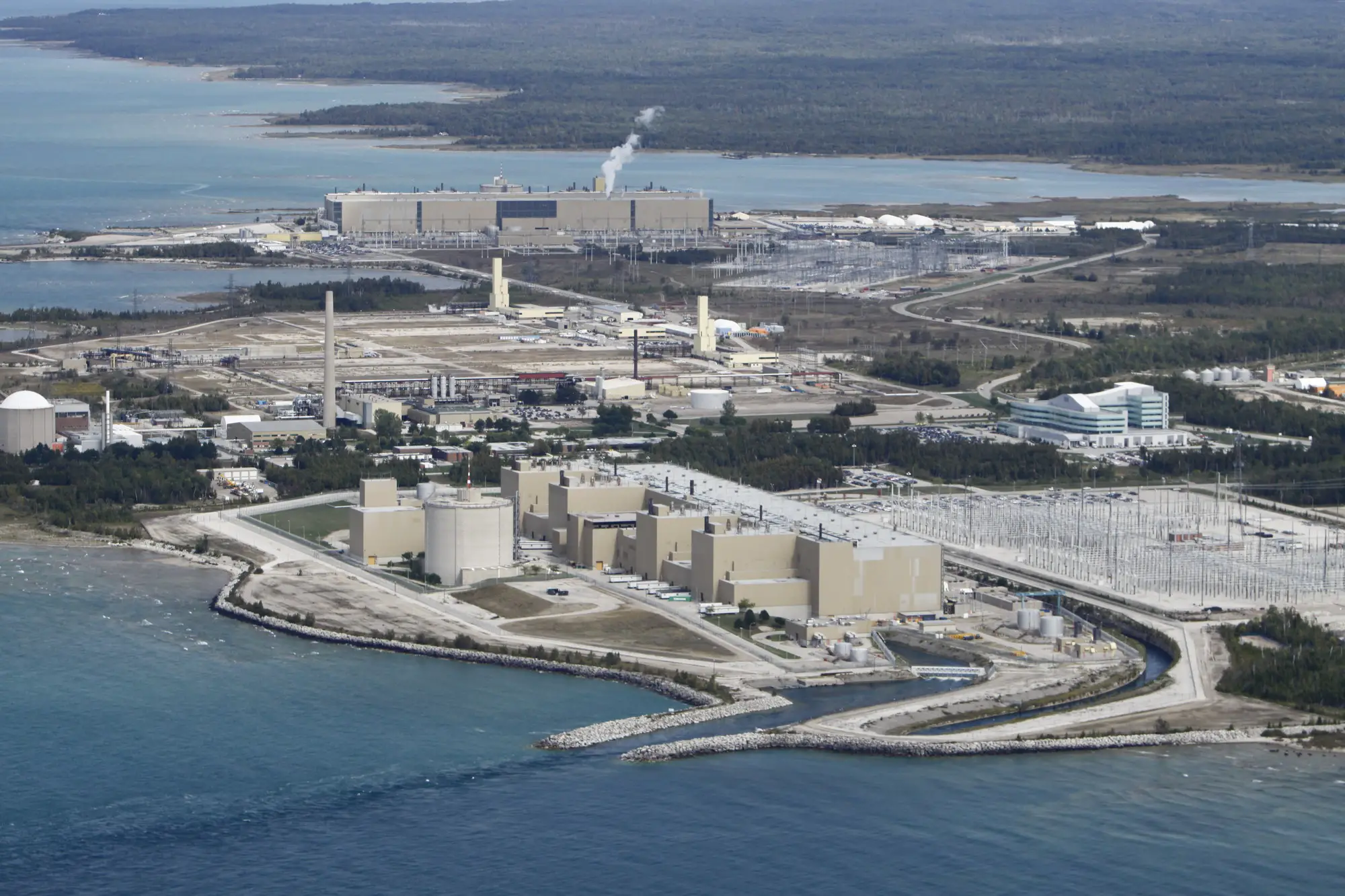
Canada is one of the world's leading nuclear energy producers, with a well-established sector that plays a key role in electricity supply, particularly in the province of Ontario.
Currently, the country has four operating nuclear power plants housing a total of 19 CANDU reactors , providing approximately 15% of the nation's electricity .
Ontario relies heavily on nuclear power, while other provinces, such as Quebec and British Columbia, have opted for renewable sources like hydroelectricity. Although some plants have been closed, such as the Gentilly Nuclear Generating Station in Quebec, the Canadian government continues to invest in modernizing and extending the lifespan of its reactors, ensuring its role in the country's energy transition.
Nuclear infrastructure in Canada
Canada has 19 commercial nuclear reactors in operation, with a total net capacity of 13.5 gigawatts (GW). These reactors generated 95.6 terawatt-hours (TWh) of electricity, representing 16.6% of the country's total electricity production in 2015. ( https://academia-lab.com )
Most of these reactors are located in the province of Ontario, where they produced 61% of the province's electricity in 2019 (90.4 TWh).
Uranium production and export
Canada has historically been one of the world's leading uranium producers. Although it was surpassed by Kazakhstan in 2009, in 2021 Canada ranked third, producing 4,693 tons of uranium, a 21% increase compared to 2020. ( Enernews )
According to 2022 figures, the country recorded 7,400 tons of uranium production from its mines. ( https://sne.es )
This production comes primarily from mines in northern Saskatchewan.
Regulation and international commitments
Canada is a member of the Nuclear Energy Agency (NEA) of the Organisation for Economic Co-operation and Development (OECD) and the International Atomic Energy Agency (IAEA).
The Canadian Nuclear Safety Commission (CNSS) regulates the use of nuclear energy and materials to protect the health and safety of Canadians and the environment, and to implement Canada's international commitments regarding the peaceful uses of nuclear energy.
Nuclear power plants in Canada
In Canada, four nuclear power plants are currently operating, all located in the province of Ontario.
Together, these plants house 19 commercial nuclear reactors with a total net capacity of approximately 13.5 GW, representing a significant source of electricity for the country.
Bruce Nuclear Power Plant, Ontario
 The Bruce Nuclear Power Plant is located on the eastern shore of Lake Huron, in the communities of Inverhuron and Tiverton, Ontario. Its name comes from Bruce County, where it is located.
The Bruce Nuclear Power Plant is located on the eastern shore of Lake Huron, in the communities of Inverhuron and Tiverton, Ontario. Its name comes from Bruce County, where it is located.
Bruce is the largest nuclear power plant in North America and the second largest in the world, surpassed only by Kashiwazaki-Kariwa in Japan. The facility houses eight CANDU nuclear reactors, with a total gross capacity of 7,276 MW and a net capacity of 6,232 MW when all units are operational. Bruce plays a key role in Ontario's energy supply, providing approximately 30% of the province's electricity.
Darlington Nuclear Power Plant, Ontario
The Darlington Nuclear Power Plant is located on the northern shore of Lake Ontario, in Clarington, Ontario. Its name comes from the former township of Darlington, where it is located.
This facility is one of Canada's largest and consists of four CANDU reactors, with a combined net capacity of 3,512 MW. The plant is renowned for its efficiency and reliability and is currently undergoing an extensive modernization program designed to extend its lifespan into the mid-21st century.
Pickering Nuclear Power Plant, Ontario
The Pickering Nuclear Power Plant is located on the north shore of Lake Ontario, in the city of Pickering.
It is one of the world's largest nuclear power plants and features eight CANDU nuclear reactors, six of which are currently operational, with a combined net capacity of 2,000 MW. The plant originally had a total net capacity of 4,124 MW, but due to regulatory decisions and phase-out plans, some units have been closed or are in the process of being deactivated.
As an additional feature, Pickering Station also houses a 1.8 MWe grid-connected wind turbine, known as the OPG 7 Memorial Turbine.
Gentilly Nuclear Power Plant, Quebec (under decommissioning)
The Gentilly nuclear power plant is currently being decommissioned. Located on the banks of the St. Lawrence River in Bécancour, Quebec, it was the province's only nuclear plant.
It consisted of two reactors: Gentilly-1 , a 250 MW prototype CANDU-BLW reactor that operated intermittently between 1972 and 1978 before being abandoned due to technical problems, and Gentilly-2 , a 675 MW CANDU reactor that operated from 1983 until its final closure in 2012.
This plant provided electricity to the Hydro-Québec grid, although its contribution represented only a small fraction of the province's energy consumption, which is largely based on hydroelectric power.
The closure of Gentilly-2 was announced in 2012 by the Quebec government due to the high costs of modernization and maintenance. Instead of investing in its renovation, the provincial government opted to begin its gradual decommissioning, a process that could take several decades. Since then, the site has been managed by Hydro-Québec with the goal of completing the decontamination and safe dismantling of the nuclear infrastructure.
Its closure marked the end of the nuclear era in Quebec, consolidating the province's dependence on renewable energy sources, primarily hydroelectric power.
Innovations and the future of nuclear energy in Canada
Canada is investing in new nuclear technologies, such as the Monark reactors and the Darlington New Nuclear Energy Project, as well as Small Modular Reactors (SMRs), demonstrating public-private collaboration in advancing nuclear technology and clean energy security. ( https://foronuclear.org )
In addition, innovative reactors are being developed, such as the Stable Salt Reactor-Waste Burner (SSR-W), which can consume its own waste using spent nuclear fuel, reducing the amount of nuclear waste and improving reactor efficiency. ( Cadena SER )